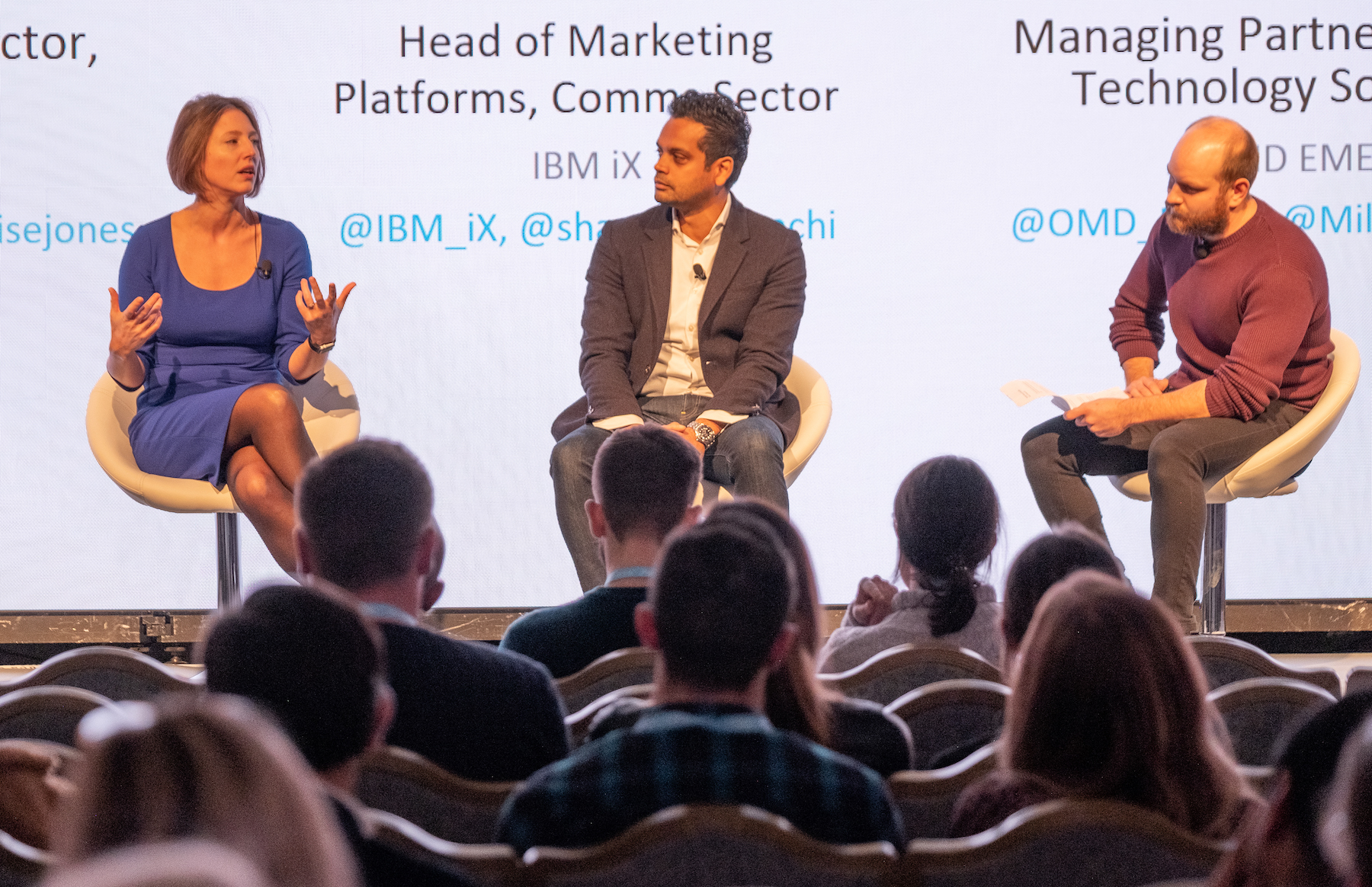Seamless, one-to-one omnichannel marketing is the holy grail for most companies. And while the individual components required to achieve it are maturing, realising this capability is still mostly a pipedream.
Before we can get down to why, we need to figure out what omnichannel marketing actually means. It’s one of those terms where you think you know what it means, but ask five marketers, and you get five different answers.
What is omnichannel marketing?
The bit that everyone agrees on:
Omnichannel marketing is the technique of reaching your customers (and prospective customers) on a wide range of online and offline channels in a unified way.
Where it gets complicated:
How many channels need to be included before it’s omnichannel? Where does multi-channel end and omnichannel begin? Does omnichannel marketing only apply to pre-sale marketing or does it cover the whole customer lifecycle?
It’s no surprise that at RampUp London 2019 the talk ‘Omnichannel harmony – is it really achievable?’ started with a discussion of what omnichannel means.
Cadi Jones, Commercial Director EMEA at Beeswax started the ball rolling:
“When I think about omnichannel, I really think about all of the different medium touchpoints that we have with consumers. I judge quite a few awards, and I think one of my biggest bugbears is when I see a nomination for an omnichannel award and it’s search and social. I’ve done both of them on my phone in the same two seconds. That’s not really omnichannel. What I’m really thinking about when I think about omnichannel is “How do you think about out-of-home working with audio and radio and cinema and TV, as well as the various digital channels.”
Sharad Somanchi, Digital Reinvention, Marketing Automation at IBM iX agreed, but wanted to go one step further:
“Adtech is not omnichannel. It’s more than that. When we look at omnichannel, we also look at all the traditional CRM channels like email, SMS, telephony, etc. And it’s not just marketing. It includes sales and customer service as well.”
When you start taking all of that into account, it suddenly makes sense why there’s so much martech out there.
It’s a complicated landscape out there
Here’s the biggest understatement you’re going to read today: the martech space is complicated.
Scott Brinker’s Martech 5,000 grows every year, with last year’s clocking up an impressive 7,040 entries. And while there are a lot of competing companies on there, there’s not as many duplications as you might think.
In his talk ‘Optimise customer experiences with moments-based marketing’, Rusty Warner, Principal B2B Analyst at Forrester said:
“We know you’ll never get to a single vendor that will do everything for you. I’ve tried to make sense of the Martech 5,000, and I’ve gotten it down to 82 categories of technology that I think marketers need to care about to do marketing and advertising well.”
82 categories. And not only does that mean many vendors, that also means many teams internally. Which means many, many silos.
Silos in your tech stack which leads to fragmentation and disconnected data, silos in your workflows which lead to missed connections and duplicated work. It’s no surprise that omnichannel is proving so difficult to pull off.
So, where do we go from here?
Customer as silo-killer
Clearly, the answer to any form of silo is going to be integration. But a piecemeal approach to integration isn’t going to be enough. To win the omnichannel race, companies need to champion integration as an independent capability in its own right.
During the talk ‘Matching messaging to customer lifetime value’, Giles Hall, business director at Acxiom UK spoke about how a cultural shift in thinking is the only way to break down the silos:
“Often when we work with brands, they’ll have silos in their data, they’ll have silos in their technology, and they’ll have silos by brand, and they’ll have silos by channel.
“And you can break down each of those individually, but until you start culturally talking about: ‘What does this consumer mean to me as a whole, as a brand’ then you’re still going to be working in silos, and you’re still not going to be driving that customer experience.”
Interestingly, this is echoed by something Sharad said:
“So you have programmatic being run by an outsourced media team. You have social teams. You have a team that manage your app. Digital teams that manage your website.
“So the first thing we’re seeing is a transformational shift in the operating model. We have Chief Customer Officers, we have a change in KPIs, moving from channel to more customer-level KPIs.”
Delivering omnichannel marketing
When you shift your view to thinking about the customer first, making people-based marketing a priority, a lot of the omnichannel challenges fall into a new perspective:
Omnichannel uses the right channels for the customer. If your customer doesn’t own a TV, linear TV isn’t the right channel.
The difference between multichannel and omnichannel is the unification of message for the customer across all channels.
Of course omnichannel marketing covers the entire lifecycle of the customer, handing seamlessly from marketing to sales, customer experience, and back to marketing.
There are undoubtedly big challenges ahead to realise the potential of omnichannel marketing, but by putting the customer first, that potential is closer than it might seem.
–
See what else your fellow marketers and advertisers discussed at RampUp London 2019.
